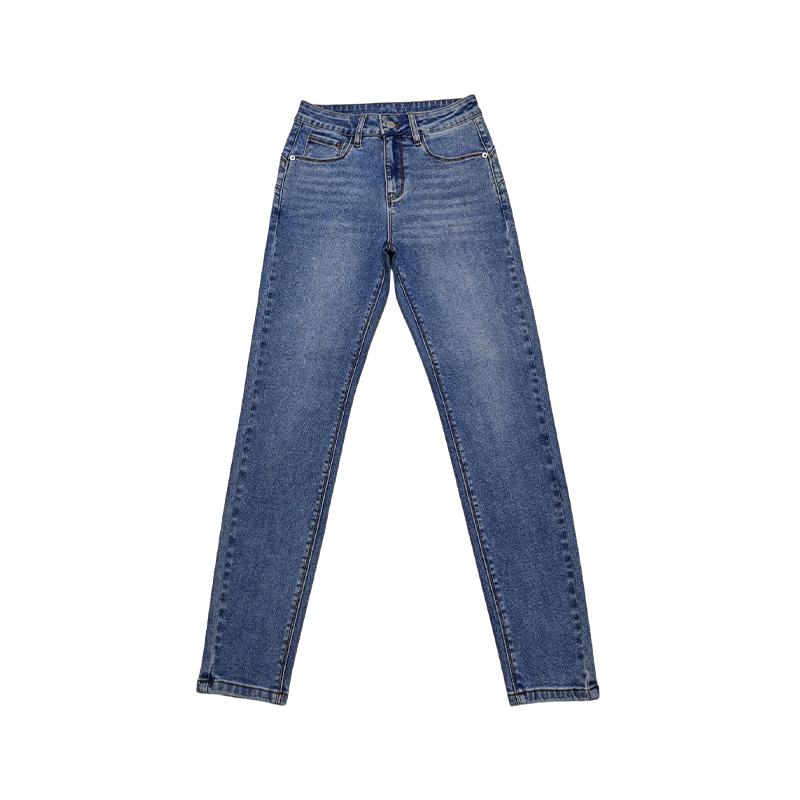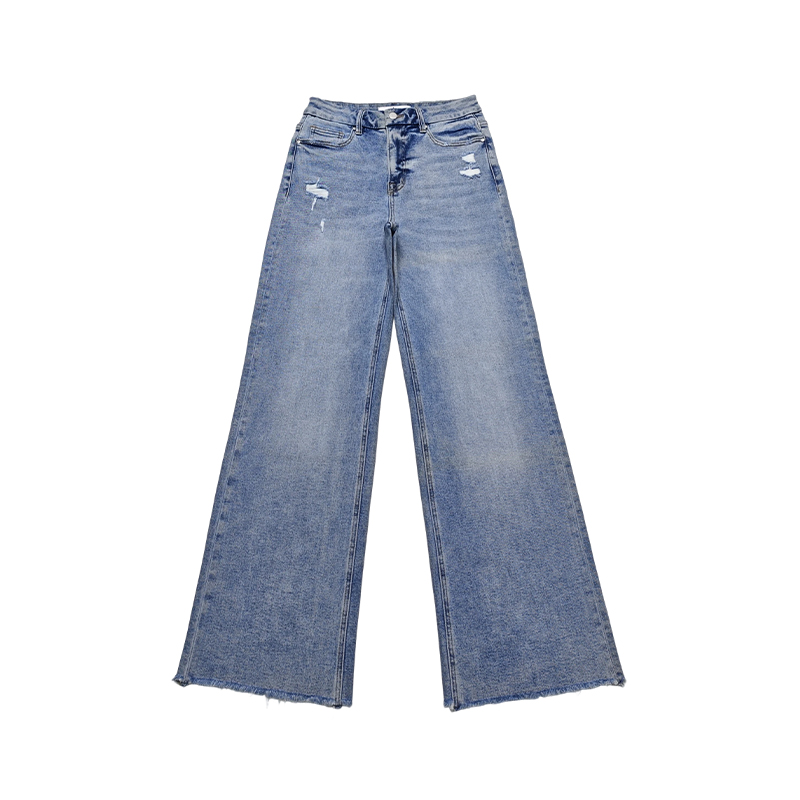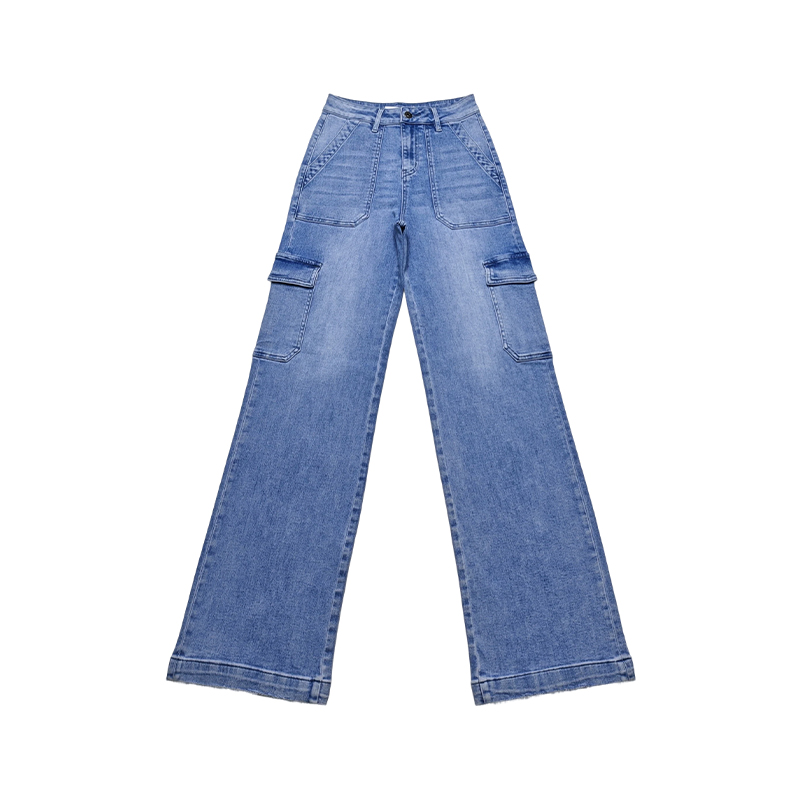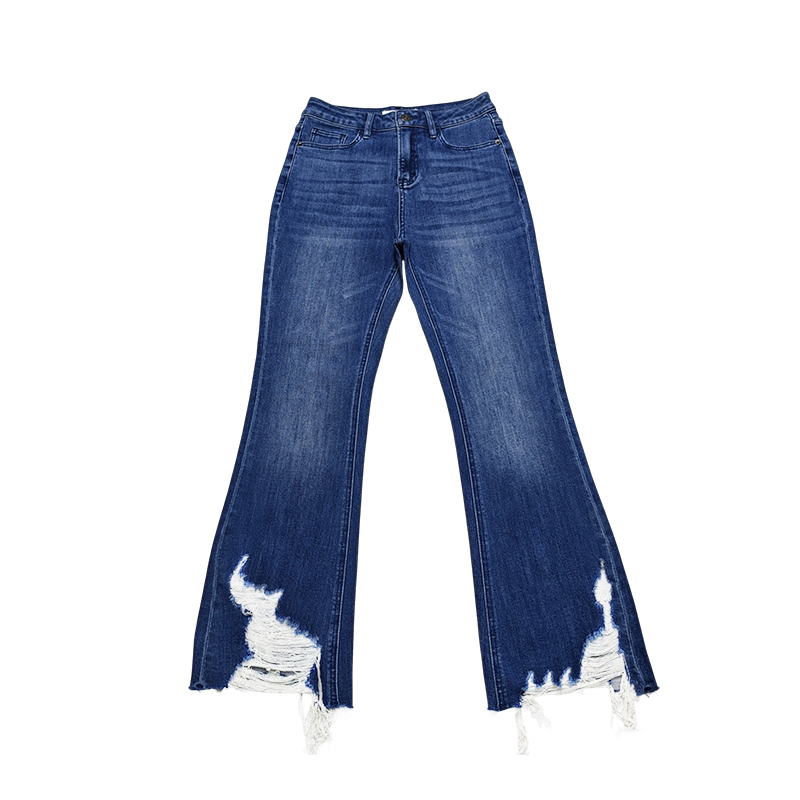How does the cut of women's trousers affect wearing comfort?
Release Time : 2025-06-04
The tailoring process of women's trousers is like the skeleton hidden under the fabric, silently determining the freedom of movement and comfort when wearing. Every line from the waist and abdomen to the legs of women's trousers, every detail from the seam position to the crotch curvature, is closely related to ergonomics. A slight deviation may bring a sense of restraint or wrinkle accumulation, affecting the ease of daily movement. Different tailoring concepts permeate various types of women's trousers. By accurately capturing the curves of the human body and reserving space, a wearing experience that combines comfort and beauty is constructed.
The tailoring of the waist and abdomen is the key starting point that affects comfort. A reasonable waistband design must fit the natural curvature of the human waist. It should not be too tight to restrict breathing, nor too loose to cause a sense of slipping. When cutting high-waisted styles, it is particularly important to pay attention to the precise positioning of the waistline. If the waistline is too high, it will press against the chest, and if it is too low, it is easy to expose the skin when bending over. The appropriate waistline should be located about one palm above the navel. With the elastic elastic band or adjustable button design, it can not only outline the waistline, but also leave enough space for stretching when eating or moving. In addition, whether the seam treatment between the waistband and the body of the women's trousers is smooth is also crucial. Poor quality stitching or too thick splicing fabrics may rub the skin when sitting for a long time, causing discomfort.
The crotch cutting is the core hub of the comfort of long women's trousers. Its curvature and depth directly affect the freedom of movement when walking and squatting. The shallow crotch design often causes the body of the women's trousers to be tight at the hips, especially when exercising, which is easy to cause a sense of involvement, while the deep crotch cutting reduces the pressure of the fabric on the body by increasing the three-dimensional space of the crotch. High-quality tailoring will use triangular or arc-shaped stitching at the bottom of the crotch according to the difference in the angle of the hips when standing and sitting, so that the fabric can stretch naturally under different movements. For example, the three-dimensional tailoring crotch commonly used in workwear women's trousers forms a smooth arc through multi-piece stitching. Even if you squat with a heavy object, there will be no risk of the fabric getting stuck or torn, which fully reflects the improvement of comfort brought by functional tailoring.
The fit between the tailoring lines of the women's trousers legs and the trajectory of human movement also profoundly affects the wearing experience. The width of the women's trousers legs of straight-tube women's trousers needs to form a delicate balance with the calf circumference: a women's trousers tube that is too narrow and thin will limit the bending of the legs and produce a tight feeling when walking; a trousers tube that is too loose may rub against the shoe surface when walking, increasing walking resistance. The tapered women's trousers should be tailored with attention to the narrowing range from the thigh to the ankle. If it narrows too quickly, wrinkles will form at the knees, affecting the flexibility of movement. A reasonable gradient ratio should follow the natural trend of the leg muscles and gradually narrow below the knees, which not only retains the space for movement but also shapes the neat leg lines. In addition, the tailoring details of the foot of the women's trousers should not be ignored. If the raw edges, curling edges or slits are not handled properly, they may hook the upper surface or cause scratches when walking, destroying the overall comfort.
The choice of seam position and processing technology often determine the upper limit of comfort in the details. If the position of the side seam deviates from the side midline of the human body, it may cause the women's trousers to shift when worn, increasing the uneven force on the waist and hips; if the arc of the back seam is too straight, it will form a tight feeling on the buttocks. High-quality tailoring will add a micro-arc design to the back seam to follow the buttocks curve and reduce friction and pressure. The treatment of the inner seam is particularly critical. Rough stitching or too thick seam allowance may cause discomfort when the legs rub against each other. High-end long women's trousers often use hemming or back-and-forth stitching to hide the raw edges on the inside of the fabric. At the same time, fine stitches are used to reduce the raised seams, so that even if you walk for a long time, it will not cause irritation to the leg skin.
The cutting process of elastic fabrics must follow the principle of "changing with the shape", and reserve enough stretching space while ensuring the shaping effect. For example, the cutting of yoga women's trousers will use four-way stretch fabrics, and the seams will be avoided from the main active parts of the body through three-dimensional cutting. Arc stitching is used at key positions such as the inner thigh and behind the knees, so that the fabric can be freely extended with the twisting and stretching of the body to avoid tightness or unthreading problems. The tailoring of non-elastic fabrics such as women's trousers in suits pays more attention to creating space for activities through structural design, such as adding "live pleats" or three-dimensional tailoring margins at the knees, so that the fabric at the knees will not wrinkle due to tightness when the wearer sits down, while maintaining a flat and straight appearance.
There are significant differences in the demand for tailoring techniques for women of different body shapes, which requires the tailoring techniques to be more targeted and inclusive. The tailoring of long women's trousers for slightly fat women should focus on the modification of the waist, abdomen, thighs and other parts, and avoid the fabric from fitting too closely to the body and causing a sense of oppression by increasing the depth of the crotch and widening the curvature of the women's trousers legs; small women need to use high-waist tailoring and narrowing the women's trousers legs to visually lengthen the leg proportions, while avoiding the long women's trousers legs piling up at the ankles to form a sense of drag. In addition, the tailoring of long women's trousers for special groups such as pregnant women will adopt an adjustable elastic belly support design and an enlarged crotch space, taking into account the dual needs of abdominal support and lower limb activity, fully reflecting the tailoring process's care for different body states.
The impact of tailoring technology on the comfort of women's trousers is essentially a precise response to the dynamic and static needs of the human body. Every line and every seam from the waist and abdomen to the feet of women's trousers is the designer's deep understanding and clever use of ergonomics. When the tailoring technology truly fits the natural curves and activity habits of the body, the long women's trousers are no longer a shell that restricts the body, but a second layer of skin that stretches freely with walking and breathing, allowing the wearer to feel an unrestrained and comfortable experience in every move.







